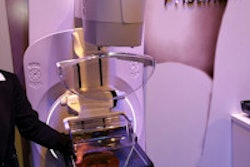Dear Advanced Visualization Insider,
Radiologists may soon have new support for diagnosing and managing osteoarthritis, thanks to a novel 3D algorithm that maps the spaces between joints with far greater accuracy than is available with other methods.
The team from the University of Cambridge in the U.K. actually developed two joint space mapping algorithms -- one for CT and one for MRI -- that both work on standard clinical images in order to accurately define changes in joint space width with CT -- or subchondral bone signal and other values in MRI. With new treatments such as stem-cell therapy fast approaching, the algorithms may be just what clinicians have been waiting for.
Not to be outdone at U.K. rival Oxford University, investigators from the Old Place joined with a private firm to evaluate their lung nodule segmentation method and determined if any differences in accuracy revealed themselves via manual versus semiautomated nodule segmentation.
Key to the success of the project was how well each method classified nodules detected by computer-aided detection (CAD) software on the potential malignancy scale. Accurate risk scoring is essential for making good decisions on whether to intervene with a biopsy or leave a CAD-detected nodule alone. Find out what the tests revealed by clicking here.
In Germany, researchers are making new inroads in automated assessment of airway disease with an algorithm that performs lobe-based segmentation to look at the extent of disease at a single time point or over a period of time.
For diseases such as cystic fibrosis, the location of diseased tissues is important as well, and the algorithm reveals both location and severity. Find out how well it performed compared with manual lobe-based mapping here.
CT is finally getting good enough to analyze individual plaque components in patients with coronary disease. Could automated plaque assessment at CT help determine which patients with arteries at risk actually go on to have events?
Investigators from the University of Tübingen in Germany and the Medical University of South Carolina put their plaque assessment tool to the test for assessing various plaque types to determine how often the algorithm was able to predict the culprit plaque in a later cardiac event. Among the findings, lipid-rich plaques accounted for almost double the lumen obstruction of other types. You'll find the rest of the story here.
Be sure to scroll through the links below for the rest of the news in advanced visualization, right here in your Advanced Visualization Community.



















